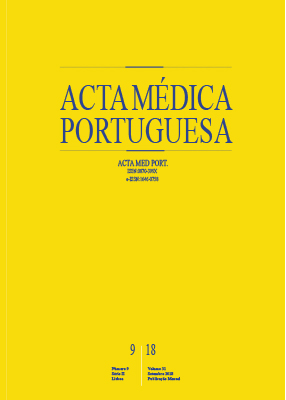Liver Multiacinar Regenerative Nodules: Imaging Findings and Clinical Implications
DOI:
https://doi.org/10.20344/amp.10259Keywords:
Chemical and Drug Induced Liver Injury, Focal Nodular Hyperplasia, Liver Diseases, Liver Neoplasms, Liver Regeneration, Magnetic Resonance ImagingAbstract
Introduction: Multiacinar regenerative nodules are benign hepatocellular nodules related to vascular disturbances of the liver. They strongly resemble conventional focal nodular hyperplasia but are connected to different clinical settings, typically chronic liver disease. The purpose of the present study was to describe the key imaging features of these lesions and compare them with a control arm of focal nodular hyperplasia.
Material and Methods: A blinded consensus review of liver magnetic resonance consisting of 26 cases of multiacinar regenerative nodules and 25 cases of focal nodular hyperplasia was performed. Lesion size, shape, margins, structure, T1 and T2 signal intensity, diffusion and contrast-enhanced features (including hepatobiliary phase), presence of a central scar and of a peripheral hypointense rim were compared between the two groups.
Results: Significant differences between multiacinar regenerative nodules and focal nodular hyperplasia included size (median 2.35 cm, IQR: 2.13, vs 6.00 cm, IQR: 5.20, respectively, p < 0.001), presence of a peripheral hypointense rim after contrast (n = 9 vs n = 2 cases, p = 0.038) and of a central scar (n = 9 vs n = 20, p = 0.002). There were no other significant differences.
Discussion: Overall multiacinar regenerative nodules and focal nodular hyperplasia have very similar imaging features but lack of a central scar and presence of a hypointense rim should suggest a diagnosis of multiacinar regenerative nodules.
Conclusions: Recognition of the imaging findings of multiacinar regenerative nodules can explain some atypical cases of focal nodular hyperplasia, avoiding unnecessary biopsies. They may also be the trigger to investigate an unsuspected underlying liver vascular abnormality.
Downloads
Downloads
Published
How to Cite
Issue
Section
License
All the articles published in the AMP are open access and comply with the requirements of funding agencies or academic institutions. The AMP is governed by the terms of the Creative Commons ‘Attribution – Non-Commercial Use - (CC-BY-NC)’ license, regarding the use by third parties.
It is the author’s responsibility to obtain approval for the reproduction of figures, tables, etc. from other publications.
Upon acceptance of an article for publication, the authors will be asked to complete the ICMJE “Copyright Liability and Copyright Sharing Statement “(http://www.actamedicaportuguesa.com/info/AMP-NormasPublicacao.pdf) and the “Declaration of Potential Conflicts of Interest” (http:// www.icmje.org/conflicts-of-interest). An e-mail will be sent to the corresponding author to acknowledge receipt of the manuscript.
After publication, the authors are authorised to make their articles available in repositories of their institutions of origin, as long as they always mention where they were published and according to the Creative Commons license.









